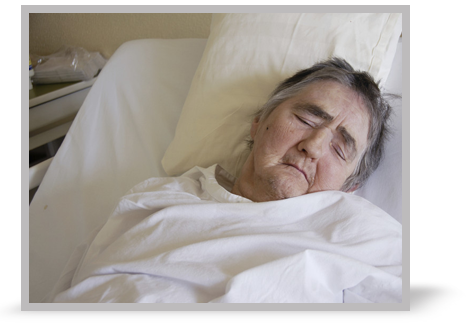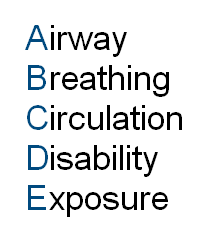
- A new patient
You are working on the surgical ward and your patient Theresa Brown, a 75-year-old woman, has just had a partial gastrectomy for a large bleeding gastric ulcer. The surgery was two hours ago and you are completing standard observations.

You notice that Mrs Brown’s abdomen is grossly distended.
You follow the ABCDE (Airway, Breathing, Circulation, Disability, Exposure) approach and note the following:
- A : Clear
- B : RR 30 min-1, SpO2 unrecordable on 4 l min[sup]-1[/sup] oxygen via a Hudson mask
- C : P 140 min[sup]-1[/sup] sinus tachycardia – femoral pulses just palpable, BP 60/40 mmHg
- D : GCS 12 (E3, V4, M5), pupils equal and reactive to light
- E : Very pale
References
See chapter 12 of the ALS manual for further reading about Special Circumstances.
Essentials: The ABCDE Approach
The ABCDE Approach

Settings
Font colour
default inverted high contrast high contrast inverted high contrast soft green on blackSample text
text looks like thisTEXT LOOKS LIKE THIS
